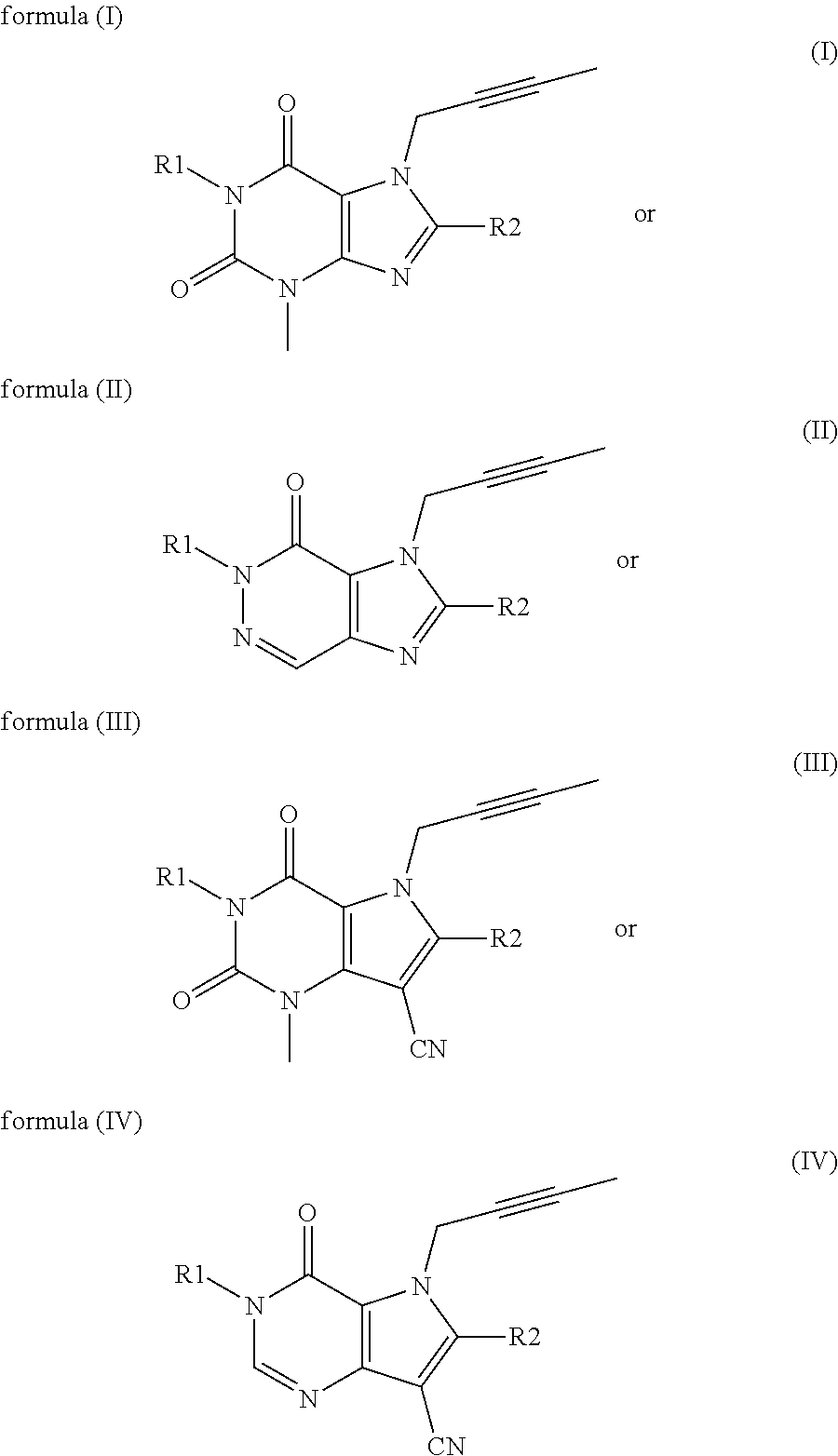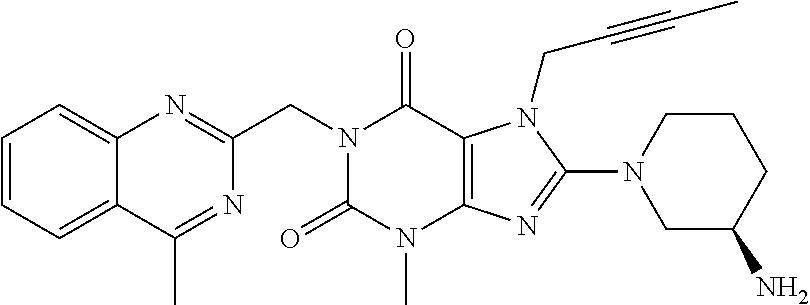Diabetes therapy
a technology for diabetes and dreaded blood sugar, applied in the direction of metabolism disorder, drug composition, peptide/protein ingredient, etc., can solve the problems of high secondary failure rate, two to five fold increase in cardiovascular disease risk, and significant reduction of life expectancy
- Summary
- Abstract
- Description
- Claims
- Application Information
AI Technical Summary
Benefits of technology
Problems solved by technology
Method used
Image
Examples
examples
Linagliptin s.c. Dosing and its DPP-4 Inhibition in Plasma
[0299]Linagliptin subcutaneous (s.c.) dosing and DPP-4 inhibition in plasma can be comparable in efficacy and duration of action to oral dosing, which may make it suitable for use in fixed combination with s.c. insulin:
[0300]Male ZDF rats (n=5) have been treated with different concentrations of BI 1356 in a subcutaneous (s.c.) administration regimen (0.001 mg / kg, 0.01 mg / kg, 0.1 mg / kg and 1 mg / kg in 0.5 ml / kg NaCl solution) in comparison to 3 mg / kg p.o. (in 0.5% Natrosol, 5 ml / kg volume of application).
[0301]DPP-4 activity in EDTA plasma was detected 1, 3, 5, 7, 24, 31, 48, 72 h following drug administration (blood was taken by venous puncture under isofluran anesthesia from the vena sublingualis).
[0302]Doses of BI 1356 from 0.01 mg / kg (s.c. administered) on demonstrated significant inhibition of DPP-4 activity compared to control. The dose of 0.1 mg / kg and 1 mg / kg (s.c. administration) of BI 1356 had a persistent DPP-4 inhib...
PUM
| Property | Measurement | Unit |
|---|---|---|
| molecular weight | aaaaa | aaaaa |
| half life | aaaaa | aaaaa |
| life time | aaaaa | aaaaa |
Abstract
Description
Claims
Application Information
 Login to View More
Login to View More - R&D
- Intellectual Property
- Life Sciences
- Materials
- Tech Scout
- Unparalleled Data Quality
- Higher Quality Content
- 60% Fewer Hallucinations
Browse by: Latest US Patents, China's latest patents, Technical Efficacy Thesaurus, Application Domain, Technology Topic, Popular Technical Reports.
© 2025 PatSnap. All rights reserved.Legal|Privacy policy|Modern Slavery Act Transparency Statement|Sitemap|About US| Contact US: help@patsnap.com



